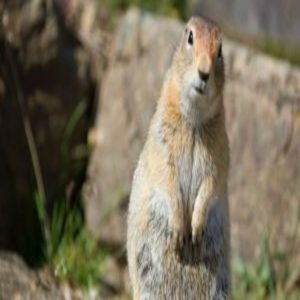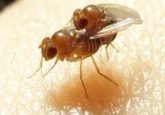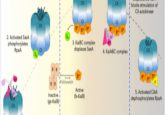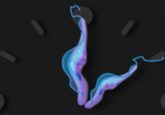Fighting jetlag under the midnight sun

Arctic ground squirrels maintain a steady daily rhythm even in the polar summer, when there are 6 weeks of continuous sunlight. How do these animals tune their internal clocks?

It is summer in northern Alaska, and the sun does not set for 6 straight weeks. There is no dusk and no dawn; instead the sun traces a tedious path from horizon to horizon each day. Many of the animals inhabiting these cold regions, like reindeer, have abandoned their daily cycles, instead becoming active and going to sleep whenever convenient.
However, one little resident, the Arctic ground squirrel, sticks religiously to its routine, emerging from its burrow and returning to it at the same time every day, even though the clock overhead is stuck in its forever-day mode.
“I’m working with a group that has been studying arctic ground squirrels for almost thirty years now,” said Cory Williams from Northern Arizona University. Williams and his team spent much of the summer of 2015 sequestered in the Toolik Field Station in Northern Alaska, capturing arctic ground squirrels, housing them under experimental conditions, and releasing them back into the wild equipped with little trackers, all in an attempt to understand how these animals maintain a stable daily clock even in the arctic summer.
Circadian rhythms are observed in nearly all organisms, from bacteria to flowering plants to elephants. While endogenous molecular factors maintain this rhythm, external cues from the environment synchronize behavior with the cycle. The main cue guiding this is believed to be light entering the eye and striking specialized cells in the retina; light–dark transition periods, such as dawn and dusk, are believed to be particularly important.
The meticulous time-keeping of the arctic ground squirrels during the long summer has puzzled biologists for a long time. To find out how they are able to maintain their clocks separate from the sun’s progression, Williams and colleagues artificially simulated light–dark conditions in the lab. They exposed about half of the captured animals to a light–dark cycle that was in phase with their natural rhythm and the remaining animals to light–dark cycles that were delayed by several hours.
“What we thought would happen was that they would essentially respond to that delayed light–dark cycle and slowly shift their rhythm in response to that,” said Williams. Instead, the scientists were surprised when the squirrels responded to the phase delay by ignoring the light–dark cycles altogether, following an activity rhythm that was independent of external cues. This rhythm, however, did not conform exactly to the 24 hour rotation period of the earth, instead falling short by a fraction of an hour each day. As a result, after a month, these free-running squirrels were out of sync with external conditions by more than 9 hours.
At this point, the researchers released the squirrels back into the wild, fitted with collars that recorded their light exposure and activity levels, while an implant recorded their body temperatures. The animals that had spent a month in captivity with a free-running rhythm were nearly 10 hours out of phase with the natural environment at this point. A human in similar circumstances would be expected to take a few days to get over the jetlag and subsequently adjust their activity pattern to match their environment. (Imagine travelling from Moscow to Los Angeles, for instance.) The squirrels, however, showed almost no jetlag, taking less than a day to return to regular activity patterns perfectly in sync with the external environment.
“What this suggests is that there are other attributes to the quality of light that could be much more important than simply shifts between light and dark,” said Williams.
“It is pretty amazing, I think,” said Roelof Hut from the University of Groningen, who has studied circadian rhythms in European ground squirrels for many years but was not involved with this study . “Their main conclusion is that something in the natural environment is a very strong time cue or zeitgeber for the circadian clock.”





